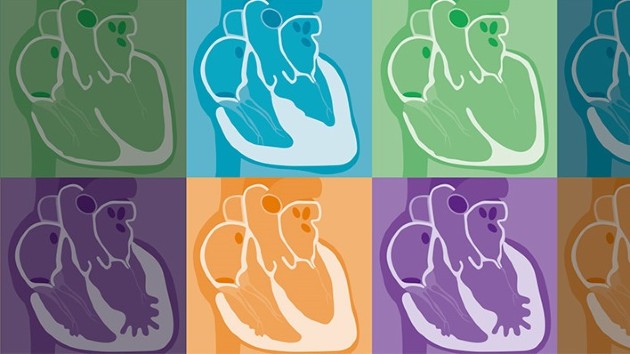Focus |
Collections
Filters
-
Collection Type
-
-
Collection |
 Immune system and cardiovascular disease
Immune system and cardiovascular disease
A collection of articles from Nature Reviews Cardiology on the role of the immune system in the pathophysiology of cardiovascular diseases
-
Collection |
 Atrial fibrillation
Atrial fibrillation
A collection of articles and associated media from Nature Reviews Cardiology and Nature Reviews Disease Primers on the theme of atrial fibrillation, the most common sustained cardiac arrhythmia.
-
Collection |
A Decade in Medicine
The past 10 years has seen great advances in the understanding and treatment of human disease. For expert perspectives on the most important breakthroughs, don't miss the FREE A Decade in Medicine eBook. In this special collection of 47 articles, leading experts highlight the most important advances in eight medical specialties between 2004 and 2015, and comment on future developments in their fields.
-
Collection |
Noncoding RNAs in cardiovascular disease
Noncoding RNAs are fundamental regulators of gene expression. Both microRNAs and long noncoding RNAs have been shown to contribute widely to the initiation and development of cardiovascular diseases, including cardiac arrhythmias, atherosclerosis, fibrosis, heart failure, hypertrophy, and myocardial infarction, as summarized in this comprehensive collection of articles from Nature Reviews Cardiology. Identifying the mechanistic role of noncoding RNAs in the pathophysiology of these conditions might lead to their use as diagnostic or prognostic biomarkers, or even as targeted therapeutic agents.
-
Focus |
10th anniversary
November 2014 marks the 10th anniversary of Nature Reviews Cardiology, originally published under the titleNature Clinical Practice Cardiovascular Medicine. To celebrate this milestone, we have commissioned a collection of articles to summarize the major advances in cardiology over the past decade. These articles, together with a special infographic, provide an authoritative snapshot of cardiovascular medicine in 2014, and how the field might progress over the next 10 years.
-
Collection |
Coronary disease
Coronary disease is the cause of more than 7 million deaths worldwide each year, an increasing proportion of which occur in low-income and middle-income countries. Despite therapeutic advances, this disease and its associated risk factors, including obesity, diabetes mellitus, hypertension, and dyslipidaemia, remains a substantial cause of morbidity and loss of productive life-years worldwide. Research in the field of coronary disease is fast-paced and diverse, covering areas such as epidemiology, imaging, pathology, drug therapy, and catheter-based and surgical interventions. This timely collection of Review articles covers a broad range of topics in coronary disease, and has been produced to coincide with the World Congress of Cardiology Scientific Sessions 2014 in Melbourne, Australia. Image : (© Eduard Härkönen | Dreamstime.com)
-
Collection |
Heart failure therapies
Heart failure is a common, costly, debilitating, and potentially lethal condition that affects up to 20% of adults during their lifetime. Myocardial infarction, ischaemic heart disease, hypertension, valvular heart disease, and cardiomyopathy can all cause heart failure. The diverse aetiologies and clinical manifestations mean that treatment is varied and ranges from lifestyle modification and medication to device implantation or cardiac transplantation. The Reviews in this collection, written by leading experts, cover the existing and novel pharmacological and genetic targets in patients with heart failure, as well as device therapy and surgery for patients whose condition cannot be adequately managed with medical treatment.
-
Focus |
Anticoagulation therapies
Important advances in anticoagulation therapy have been made in the past few years. Many novel agents, including oral factor Xa inhibitors and direct thrombin inhibitors, are currently under investigation as alternatives to vitamin K antagonists in various clinical settings. This focus issue features four Review articles, written by leading experts, in which new clinical trial data and controversies in the field are discussed and put into context.
-
Collection |
Valvular disease
Disease of the aortic, mitral, pulmonary, or tricuspid valves can be severe, recalcitrant to medical therapy, and fatal. Surgical repair or replacement of heart valves can reduce regurgitation, but is contraindicated for many high–risk patients, particularly elderly individuals with multiple comorbidities. In the past 5 years, the advent of percutaneous, transcatheter valve implantation or repair has revolutionized the treatment of valvular insufficiency. In this Collection of articles from Nature Reviews Cardiology, the etiology, epidemiology, diagnosis, assessment, and interventional and surgical treatment of valvular disease are comprehensively and expertly reviewed.
-
Focus |
 Hypertension
Hypertension
Despite the availability of multiple pharmacotherapies and the known preventative capacities of life-style modification, hypertension remains a highly prevalent disorder worldwide. Indeed, high blood pressure (BP) is estimated to result in approximately half of the global burden of cardiovascular disease.
-
Collection |
Ischemic stroke
Stroke is the second most common cause of death worldwide and a major source of morbidity. Stroke is strongly associated with atrial fibrillation, the most prevalent cardiac arrhythmia, and with transcatheter aortic valve therapeutics, the use of which is becoming more widespread. This collection of articles from Nature Reviews CardiologyandNature Reviews Neurologycomprises a selection of three Reviews, one Perspectives article and five News & Views, which explore advances in our understanding of the pathophysiology, assessment, prevention and management of ischemic stroke.

 Cardiomyopathies
Cardiomyopathies